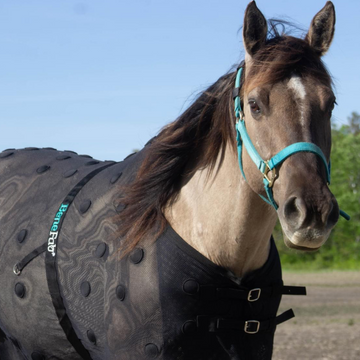Blog
Five Ways to Test for Winter Dehydration in Horses
Five Ways to Test for Winter Dehydration in Horses By Emily Konkel
“It is a little known fact that horses can actually be thirstier in the winter than they are in the summer.” - Dr. Judy Marteniuk, Equine Extension Veterinarian, MSU College of Veterinary Medicine
Dehydration in horses during the winter is more of an issue then people tend to think. Horses tend to be thirstier in the winter. A horse’s thirst mechanism does not always work as effectively in the winter as it does in the summer, especially if the humidity is high. Some horses will eat snow if it is available which will cut back on their water intake. This is not an adequate water source. Water should be offered to horses at all times. Horses tend to drink, on average, five to six gallons of water per day. Here are some helpful tips to find out if your horse is dehydrated:
1. Gum Test – Press on your horse’s upper gums to see how long it takes the capillaries to refill. The skin will turn light pink or white as your press but the red color should come back quickly. If it takes longer than two seconds to refill, your horse may be dehydrated.
2. Skin Elasticity – Pinch a section on skin on your horse’s body. The skin should spring back into place quite quickly. If it stays up like a ridge or returns to its shape slowly, this is a sign of dehydration.
3. Soft Tissue – In a hydrated horse, their gums and eyes will appear moist and shiny. If your horse’s gums are extremely red or their eyes are dry, this is a good indication of dehydration as the body is using that fluid to compensate elsewhere.
4. Heart Rate – Check your horse’s heart rate. A normal resting heart rate should be between 36 – 42 beats per minute. If it is above 60, your horse could be showing signs of dehydration.
5. Respiration Rate – A normal respiration rate for a horse is 8-12 breaths per minute. A horse that is dehydrated will take more, shallow breaths. Dehydration in the winter is a serious issue. Make sure that your horse is offered adequate amounts of water each day and make sure they are drinking
it! For more information of dehydration visit: https://cvm.msu.edu/alumni-friends/information-for-animal-owners/winter-dehydration-in-horses or http://www.redmondequine.com/dehydratedhorse/





















